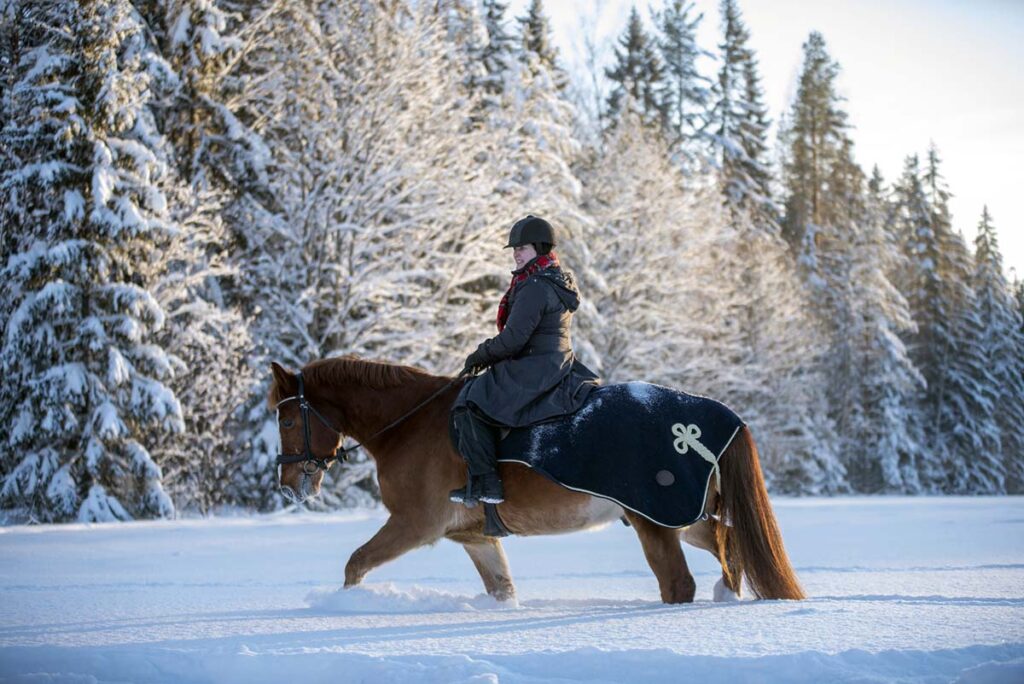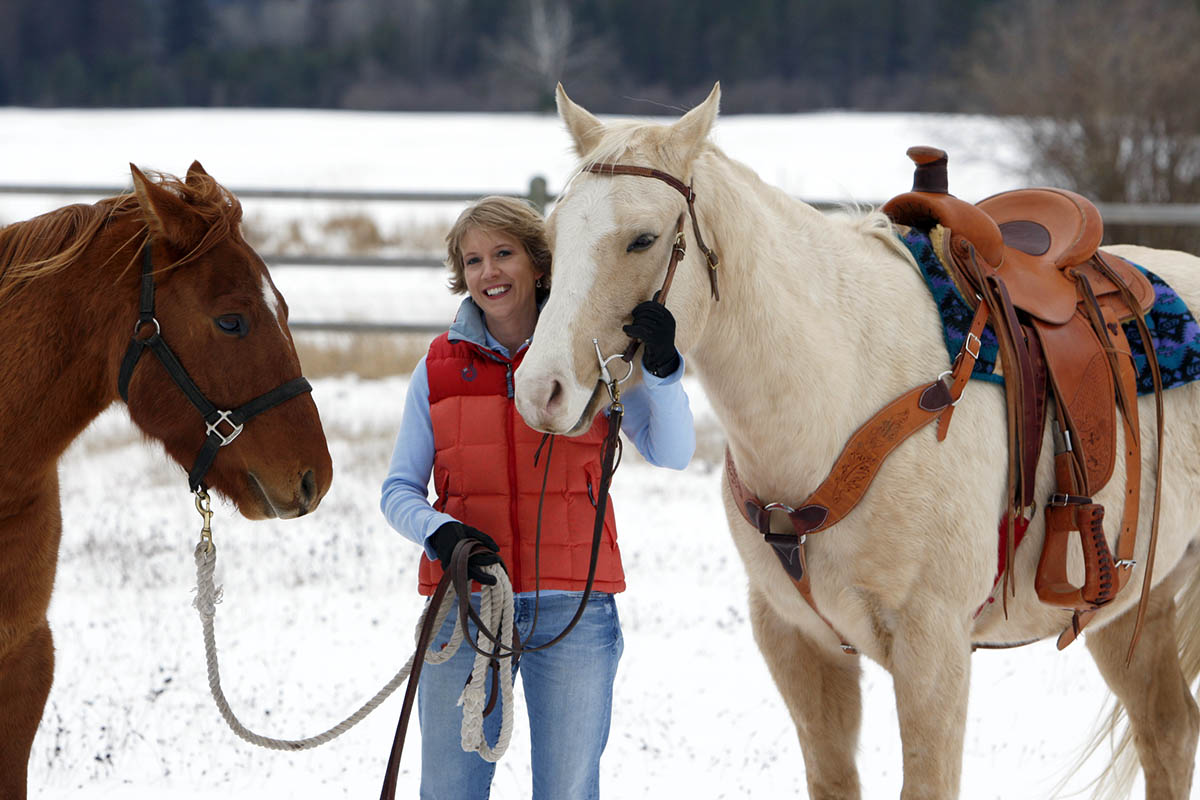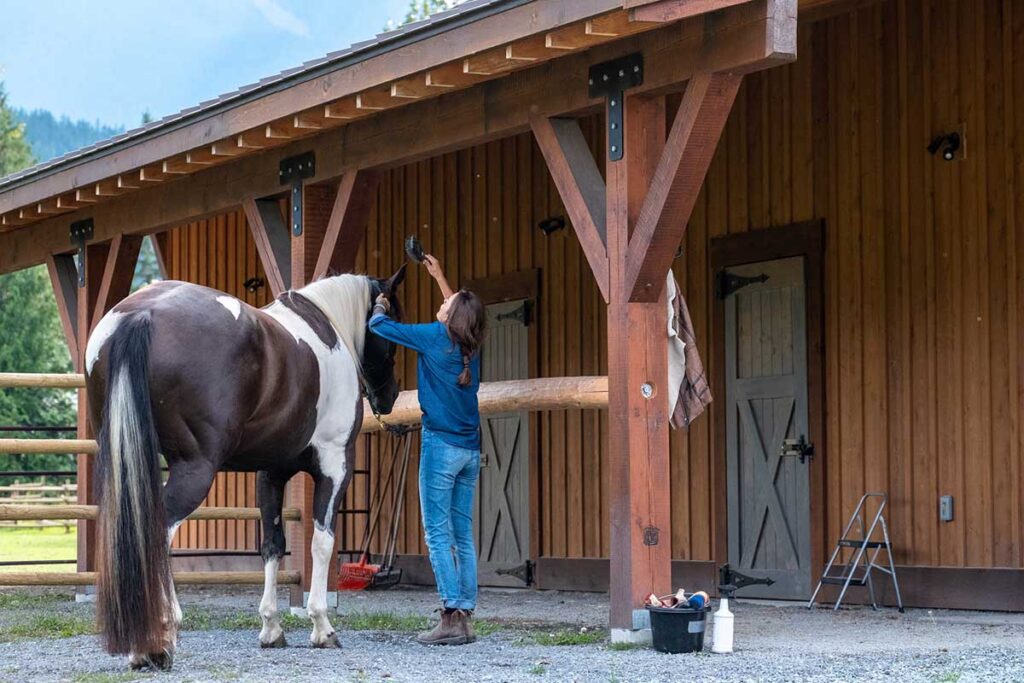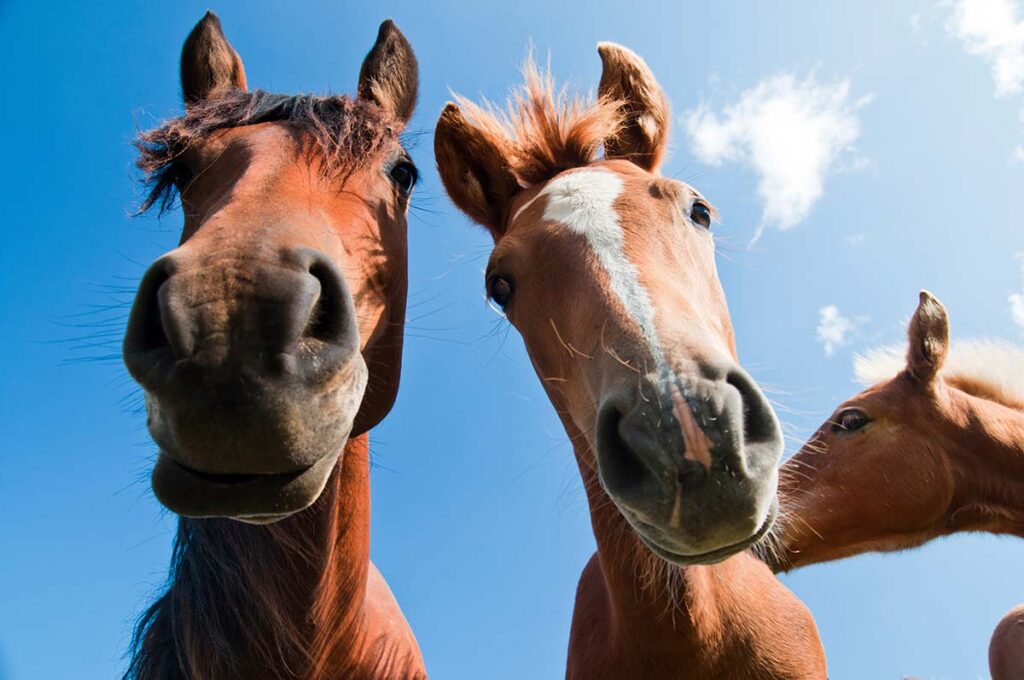Us horse lovers aren’t afraid of a little cold. We don’t hesitate to throw on our warmest coats, grab the hand and toe warmers, and head down to the barn in subfreezing temperatures to see our horses. Riding in winter, however, comes with an extra set of challenges. So in this article, we’ll discuss how cold is too cold to ride a horse and offer tips for riding safely in cold weather.
Understanding Horses’ Cold Tolerance
Horses are incredibly resilient animals, and they’ve evolved to tolerate a wide range of temperatures. In fact, horses are probably much more comfortable in extreme cold than you might think, thanks to their insulating hair coats and heat-generating digestive systems.
Exercise, however, puts extra stress on horses’ respiratory and musculoskeletal systems. Researchers have even shown that when temperatures dip below 23 degrees F, exercising horses’ respiratory tracts are at risk of damage. Plus, keep in mind whether your horse is body-clipped. He’ll be more susceptible to the cold and benefit from blanketing and/or a quarter sheet when riding.
Related Reading: How Cold Is Too Cold for Horses?
Cold Weather Riding Considerations
Most horses can be safely ridden in winter if you remember these three things:
Footing can be especially treacherous in cold weather. Frozen footing can feel like concrete under a horse’s hooves, and mud that gets churned up and then freezes solid can twist joints and bruise feet. Watch to see if your horse leaves hoof prints in the turf you’re traveling over. If he doesn’t, the ground has no “give” and you’ll want to stick to a walk.
Cold air can worsen respiratory issues. Studies have shown that extremely frigid air—in the single digits—can lead to minor inflammation in the lungs. If your horse is already dealing with a respiratory condition like equine asthma, cold air could exacerbate the situation. You’ll want to skip the below-freezing rides until he’s breathing easier. But resist the urge to shut him up in the barn to “protect” his lungs: The dust and ammonia fumes inside will be far more damaging than any cold, fresh air.
Proper warm-ups take longer in cold weather. Cold weather necessitates taking a few extra minutes at the start of your ride to prepare tendons, ligaments, and cartilage for the work ahead. Warming up heats crucial structures by increasing blood flow, a process that will take longer if you are starting at lower temperatures. Stick to the walk and slow trots, with gentle bending and stretching exercises, for about twice as long as you might in the summer. Keep in mind that a horse with arthritis is going to feel stiffer in the cold. This stiffness, however, will resolve with a careful, gradual warm-up. If your arthritic horse doesn’t improve over the first 20 minutes of a ride, the problem isn’t the temperature. Call your veterinarian to discuss a more aggressive arthritis-management strategy.
Tips for Riding Safely in Winter

If you do plan to ride in cold conditions, here are some tips to ensure you and your horse stay safe:
- Avoid riding on any icy or uneven surfaces.
- Monitor how your horse is feeling. Because he can’t tell you if he’s uncomfortable, keep an eye on his body language, gait, and breathing.
- If your horse is clipped, outfit him with a quarter sheet that covers his flanks and hindquarters, so those sensitive areas and muscle groups stay warm.
- Don’t forget about your own comfort! Wear layers to keep yourself warm, and protect your ears, hands, and feet from the cold.
- Prevent your horse from sweating excessively during cold weather. When a horse sweats, he loses valuable body heat and can become chilled quickly.
- If your horse does sweat during winter exercise, towel him off after and apply a cooler (a special type of blanket that helps absorb and wick away moisture).
- Err on the side of caution. If the temperature is too low or the weather conditions are too dangerous, cancel or reschedule your ride.
Take-Home Message
Before heading out to ride this winter, check the temperature and the footing to determine whether it’s safe. As a rule of thumb, if the temperature drops below 20 degrees Fahrenheit, it’s best to avoid riding altogether. If you decide to ride in temperatures between 20-32 degrees, take it slow, and monitor your horse’s breathing and behavior. With these tips in mind, you can safely enjoy your horse during colder weather.
Portions of this article originally ran on EQUUS.








